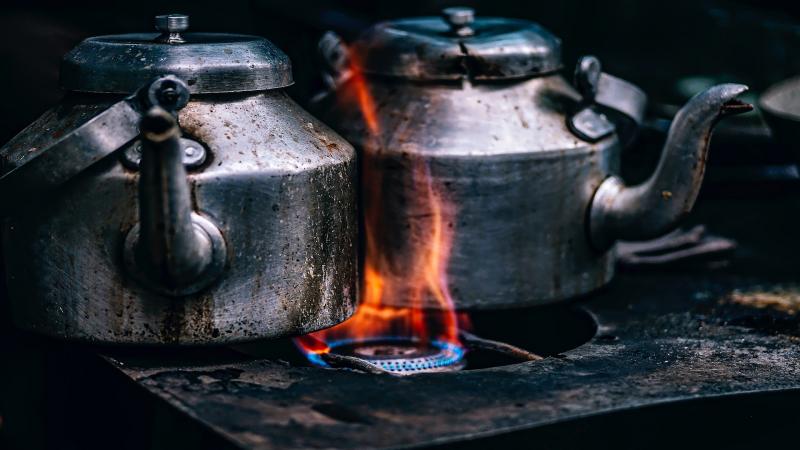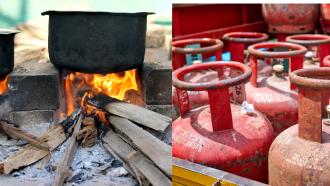
According to the 2011 Census, around 78% of rural and 14% of the urban households in India used conventional solid fuels like wood, dry grass, and cow dung cakes to cook. The harmful pollutants emitted by burning these fuels affected women and children severely, resulting in respiratory illnesses. Hence in 2016, the government introduced the Pradhan Mantri Ujjwala Yojana (PMUY or the Ujjwala scheme) to transform the use of cooking energy by distributing LPG connections either free of cost or at subsidised rates. By March 2020, the government claimed that LPG coverage in the country had increased —with cylinders that use smokeless liquified petroleum gas—to 97.4% of India's households. Yet, low use and poor refill rates for LPG cylinders by the beneficiaries have put the scheme under serious scrutiny.
Now, a recent study suggests that tailoring the Ujjwala scheme for rural households can increase LPG adoption. The study, published in the journal Nature Energy, involved researchers from the Council on Energy, Environment and Water, New Delhi, and Columbia Mailman School of Public Health, USA.
"Continued reliance on traditional cooking fuels defeats the purpose of the Ujjwala scheme. Therefore, through this paper, we wanted to understand how household and community level factors can increase the LPG use and reduce the solid fuel use for cooking", says Mr. Sunil Mani, a programme associate at the Council on Energy, Environment and Water (CEEW) and an author of the study.
The study conducted two rounds of surveys in the densely populated states of Bihar, Jharkhand, Madhya Pradesh, Odisha, Uttar Pradesh, and West Bengal. The first survey, conducted in 2015, covered 8,563 households, and the second, in 2018, included 9,072 houses with a majority belonging to those covered in the first survey.
"The second round was done in 2018 because immediately after ACCESS's (Access to Clean Cooking Energy and electricity- Survey of States) first round in 2015, two big schemes were launched to address the problems of energy access in the country. The first one was the Ujjwala scheme for cooking energy, launched in May 2016 and the second was the Saubhagya (Pradhanmantri Sahaj Har Ghar Bijli Yojana), launched in September 2017", explains Mr. Mani.
The data from the survey revealed that between 2015 and 2018, LPG adoption rose by 36 percentage points in these six states (from 22 % to 58%). Among the new connections, 43% got their LPG through the Ujjwala scheme. The use of LPG among the rural households also increased. However, the study found that a majority of the households who had benefited from the Ujjwala scheme still relied primarily on firewood and dung cakes and were significantly less inclined to use LPG as exclusive fuel.
What prevented households from embracing LPG? The study found that households using LPG as a primary fuel for cooking influenced their neighbours. It encouraged the adoption of LPG in the village as a whole. More experience with LPG stoves and less distance travelled for a gas refill also promoted LPG use. However, households that owned cattle and relied on dung cakes, because of its free availability, were reluctant to use LPG.
The financial stability of a family also had a substantial impact on whether individuals chose to order an LPG refill. "Rural India has a lot of challenges because biomass is freely available, and income is not regular. Most households depend on agriculture or daily wage labour. Hence, they do not have enough month-end savings to order an LPG refill", points out Mr. Mani.
The study recommends that the Ujjwala scheme must provide relatively higher financial benefits (say, in the form of increased subsidy), especially to the PMUY households to achieve the sustained use of LPG. Further, creating alternative opportunities to sell freely available biomass could lead to monetary benefits, which can then be invested in clean cooking fuel. Defined cash inflow in agricultural and daily wage households will help in saving for LPG refills each month, argue the researchers. They also suggest that government data about LPG use in India must be freely accessible and thoroughly collected to drive constructive recommendations for improving policy.
The researchers acknowledge that the Ujjwala scheme has been transformational in providing LPG to many households, out of which around 50% have started using it as a primary fuel source.
"So even though the glass appears half empty we must realise that it is also half full," says Mr. Mani. "Our findings could help design a policy to address specific factors in rural areas to increase its adoption and make it a colossal success," he signs off.
This article has been run past the researchers, whose work is covered, to ensure accuracy.






